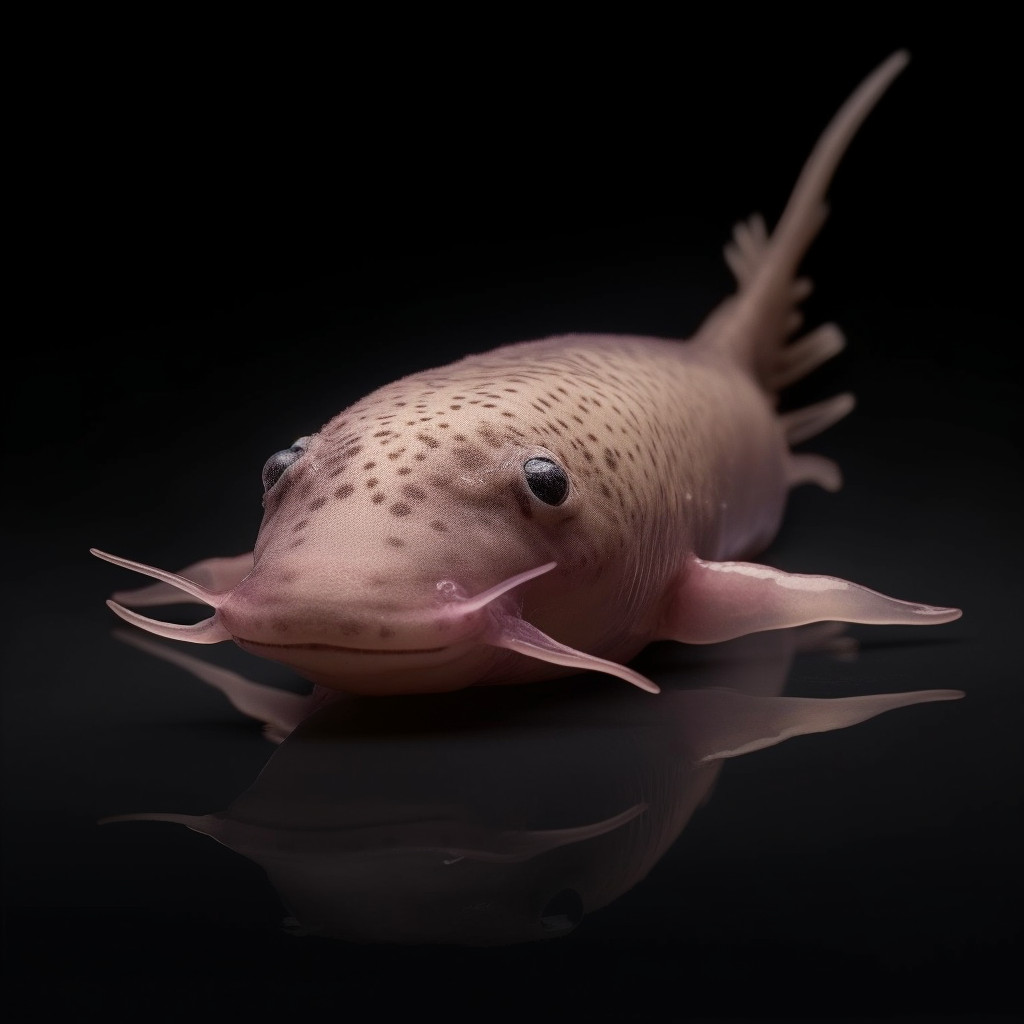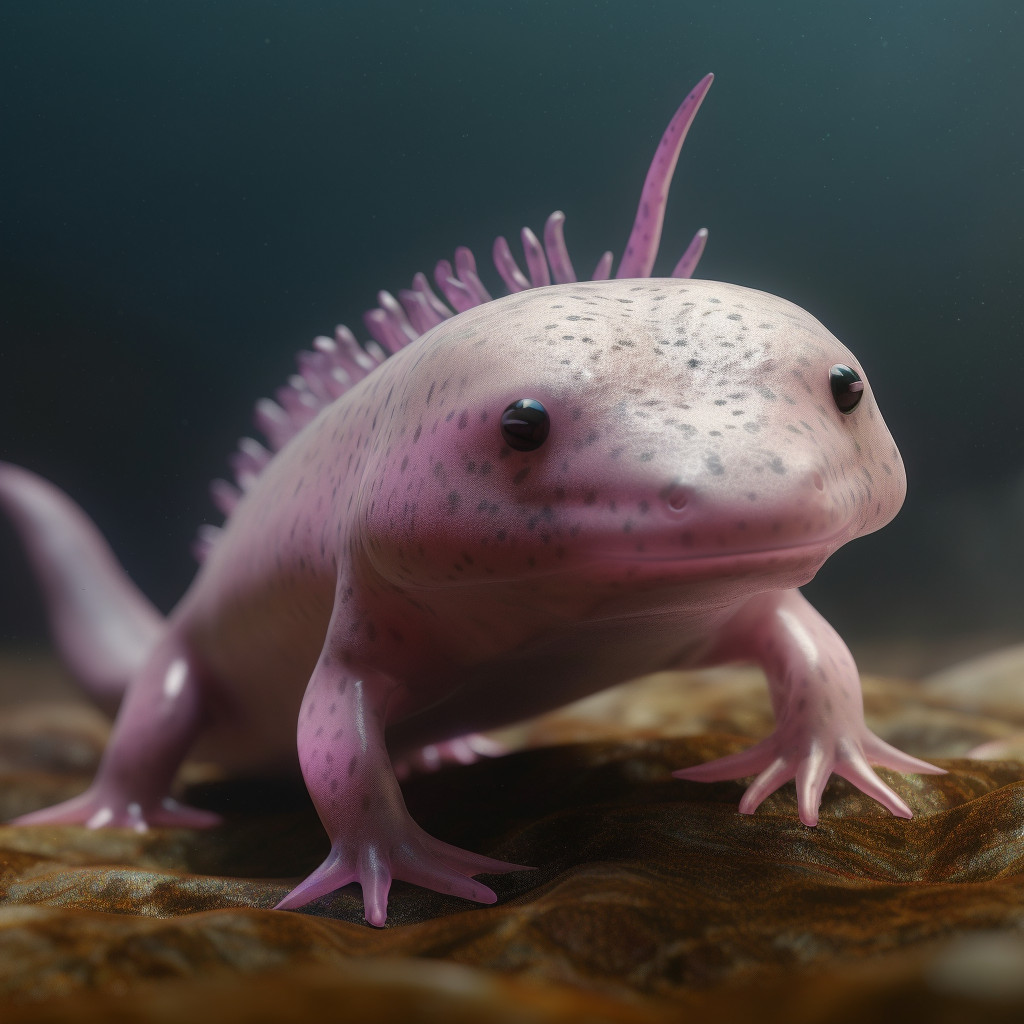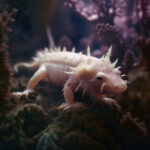Axolotls, also known as Mexican walking fish, are fascinating creatures that have captivated the interest of many pet enthusiasts. These unique amphibians are native to the lakes and canals of Mexico City and are known for their regenerative abilities and striking appearance. One question that often arises when caring for axolotls is whether they need light in their habitat. In this article, we will explore the importance of light for axolotls and provide insights into how to properly provide lighting for these captivating creatures. So, let’s dive in and shed some light on the subject!
Key Takeaways
- Axolotls do not require direct light and can thrive in low-light conditions.
- Providing a light source for axolotls is mainly for aesthetic purposes or to promote plant growth in their tank.
- Excessive exposure to bright light can be stressful for axolotls and may lead to health issues.
- It is important to maintain a consistent light-dark cycle to mimic their natural environment and promote their overall well-being.
Understanding Axolotls: A Brief Overview
Axolotls are fascinating creatures that have captured the attention of many aquarium enthusiasts. These unique amphibians, also known as Mexican walking fish, are native to the lakes and canals of Mexico City. With their cute appearance and regenerative abilities, axolotls have become popular pets for both beginners and experienced aquarists.
What are Axolotls?
Axolotls are a type of salamander that retains its juvenile features throughout its life, a phenomenon known as neoteny. This means that they remain aquatic and gilled, unlike other salamanders that undergo metamorphosis and transition to a terrestrial lifestyle. Axolotls have long been revered for their ability to regenerate lost body parts, including limbs, spinal cord, and even parts of their heart and brain.
Axolotl Habitat Requirements
To provide the best care for your axolotl, it’s essential to understand their specific habitat requirements. Creating a suitable environment will ensure their health and well-being. One crucial aspect to consider is lighting.
Axolotls and Light
Axolotls do not require intense lighting like some other aquarium animals. In fact, they are quite sensitive to bright lights and may become stressed or even develop health issues if exposed to excessive light. Therefore, it is important to provide them with a suitable lighting setup.
Natural Light vs. Artificial Light
In the wild, axolotls are primarily nocturnal creatures, meaning they are most active during the night. They prefer dimly lit environments and are sensitive to direct sunlight. When setting up an aquarium for your axolotl, it is best to replicate their natural habitat as closely as possible.
Choosing the Right Lighting
When it comes to lighting your axolotl tank, it is crucial to strike a balance between providing enough light for your axolotl’s well-being and avoiding excessive brightness. Here are a few key considerations:
-
Light Intensity: Axolotls prefer low to moderate light intensity. Using a dimmer or low-wattage bulb can help achieve the desired lighting conditions.
-
Light Duration: Axolotls require a regular light cycle to maintain their natural behavior and sleep patterns. Aim for around 10-12 hours of light per day, followed by a period of darkness.
-
Light Type: It is recommended to use a full-spectrum aquarium light that mimics natural daylight. This type of light provides a balanced spectrum of colors and promotes the growth of beneficial aquatic plants.
-
Light Placement: Position the light source in a way that it does not directly shine on the axolotl or create harsh reflections on the water surface. This will help reduce stress and create a more natural environment.
The Role of Plants
Aquatic plants play a crucial role in an axolotl’s habitat. They not only provide shelter and hiding spots but also contribute to maintaining water quality by absorbing excess nutrients and producing oxygen. Additionally, live plants can help diffuse the light and create a more natural and aesthetically pleasing environment for your axolotl.
In conclusion, while axolotls do not require intense lighting, providing them with a suitable lighting setup is essential for their overall well-being. By replicating their natural habitat and considering their sensitivity to light, you can create a comfortable and healthy environment for your axolotl to thrive. Remember to strike a balance between light intensity, duration, type, and placement to ensure your axolotl’s happiness and longevity.
The Light Preferences of Axolotls
A. Do Axolotls Like Light?
Axolotls, also known as Mexican walking fish, are unique and fascinating creatures that have captivated the attention of many aquarium enthusiasts. One common question that arises when caring for these aquatic salamanders is whether they require light in their tank.
While axolotls do not necessarily require light, they can benefit from a well-lit environment. Light plays a crucial role in the overall health and well-being of these creatures. It helps in maintaining a natural day and night cycle, promotes the growth of beneficial plants, and enhances the overall aesthetics of the aquarium.
B. How Much Light Do Axolotls Need?
When it comes to the amount of light axolotls need, it is essential to strike a balance. Too much light can cause stress and discomfort to these nocturnal creatures, while too little light can hinder their growth and overall health.
Ideally, axolotls should be provided with a light cycle that mimics their natural habitat. This means providing them with approximately 12 hours of light and 12 hours of darkness each day. This light cycle helps regulate their internal clock and promotes healthy behaviors.
It is important to note that axolotls are sensitive to bright, direct light. Therefore, it is recommended to use a low-intensity light source or indirect lighting in their tank. This can be achieved by using a light fixture specifically designed for aquariums or by placing the tank in a well-lit room without exposing it to direct sunlight.
C. Do Axolotls Need Light at Night?
Axolotls are primarily nocturnal creatures, meaning they are most active during the night. During this time, they tend to explore their surroundings, hunt for food, and exhibit their natural behaviors. Therefore, it is not necessary to provide them with light during the night.
In fact, exposing axolotls to constant light during the night can disrupt their natural sleep patterns and cause stress. It is recommended to turn off the lights in their tank during the night to provide them with a dark and peaceful environment.
However, if you prefer to have some ambient light in the room where the axolotl tank is located, it is important to ensure that the light is not too bright or directly shining into the tank. This will help maintain a balance between their nocturnal nature and the need for a dark environment during their resting hours.
In conclusion, while axolotls do not necessarily require light, providing them with a suitable light cycle can greatly benefit their overall health and well-being. It is important to strike a balance between light and darkness, mimicking their natural habitat, and ensuring that the light source is not too bright or directly shining into their tank. By creating a well-lit but not overly bright environment, you can help your axolotls thrive in their aquarium.
The Role of UV Light in Axolotls’ Life

A. Do Axolotls Need UV Light?
Axolotls, those fascinating aquatic creatures, have specific lighting needs that are essential for their overall health and well-being. While they don’t necessarily require UV light, providing it can offer several benefits to these unique amphibians.
UV light, or ultraviolet light, is a type of electromagnetic radiation that falls outside the range of visible light. It is divided into three categories: UVA, UVB, and UVC. UVA and UVB are the most relevant for axolotls.
In the wild, axolotls inhabit freshwater bodies in Mexico, where they receive natural sunlight. Sunlight contains UVA and UVB rays, which play important roles in their biological processes. UVA light helps with their vision, while UVB light aids in the synthesis of vitamin D3, which is crucial for calcium metabolism and bone health.
B. What Kind of UV Light Should I Use for Axolotls?
If you decide to provide UV light for your axolotl in captivity, it’s important to choose the right type of UV light and set it up correctly in their tank.
-
UVB Lighting: Axolotls require UVB lighting to ensure they receive the necessary vitamin D3. This can be achieved by using a UVB bulb specifically designed for reptiles or amphibians. These bulbs emit UVB rays that mimic natural sunlight. It is recommended to use a 5% UVB bulb, as this provides a suitable level of UVB radiation without being too intense for axolotls.
-
Lighting Setup: When setting up the UVB light in the axolotl tank, it should be positioned in a way that allows the light to penetrate the water. Placing the bulb above a mesh or screen lid will ensure the UVB rays can reach the axolotl without the risk of the animal escaping or being harmed by direct contact with the bulb.
-
Lighting Schedule: Axolotls should be exposed to UVB light for a specific duration each day. A recommended schedule is to provide 8-10 hours of UVB light per day, replicating the natural daylight cycle. This can be achieved by using a timer to control the lighting schedule and ensure consistency.
-
Additional Considerations: It’s important to monitor the temperature of the tank when using UVB lighting, as some bulbs can generate heat. Axolotls prefer cooler water temperatures, so it’s crucial to maintain a suitable environment for their well-being. Additionally, ensure that the UVB bulb is replaced regularly, as its effectiveness diminishes over time.
By providing UVB lighting for your axolotl, you can help replicate their natural habitat conditions and support their overall health. However, it’s important to remember that UV light should not be the sole source of lighting in the tank. Axolotls also require periods of darkness to rest and regulate their biological processes.
In the next section, we will explore the importance of darkness in an axolotl’s life and how to create a suitable light cycle for these unique creatures.
The Impact of Light on Axolotls’ Health and Behavior

A. Can Axolotls Have Light?
Axolotls, also known as Mexican walking fish, are fascinating aquatic creatures that require specific care to thrive in captivity. One aspect of their care that often raises questions is the role of light in their habitat. So, can axolotls have light?
The answer is yes, axolotls can have light in their tank. However, it’s important to understand that not all light sources are suitable for these unique amphibians. Axolotls are sensitive to bright lights, especially those that emit UV rays. Therefore, it’s crucial to provide them with the right type and intensity of light to ensure their well-being.
B. Do Axolotls Hate Light?
While axolotls don’t necessarily hate light, they do have specific lighting preferences. In their natural habitat, axolotls are primarily nocturnal creatures, meaning they are most active during the night. As a result, they tend to prefer dimmer lighting conditions during the day.
Exposing axolotls to excessive light or bright, direct sunlight can cause stress and discomfort. It can also disrupt their natural sleep patterns and affect their overall health. Therefore, it’s essential to strike a balance between providing them with enough light for visibility and ensuring they have periods of darkness for rest.
C. The Effects of Excessive Light on Axolotls
Excessive light can have detrimental effects on axolotls’ health and behavior. Here are some potential issues that can arise from subjecting axolotls to too much light:
-
Stress and Discomfort: Axolotls are sensitive creatures, and exposure to excessive light can cause them stress and discomfort. This can lead to a decrease in appetite, lethargy, and even illness.
-
Sleep Disruption: Axolotls require periods of darkness to rest and rejuvenate. Excessive light can disrupt their sleep patterns, leading to sleep deprivation and potential health problems.
-
Algae Overgrowth: Bright light can promote the growth of algae in the tank, which can be harmful to axolotls. Algae can consume oxygen and release toxins, compromising the water quality and the axolotls’ well-being.
To prevent these issues, it’s crucial to provide axolotls with a suitable light cycle and ensure they have periods of darkness to mimic their natural habitat. This can be achieved by using a low-intensity aquarium light or by positioning the tank away from direct sunlight.
In conclusion, while axolotls can have light in their tank, it’s essential to consider their specific lighting requirements to promote their health and well-being. By providing them with the right type and intensity of light, as well as periods of darkness for rest, you can create a suitable environment for these fascinating creatures to thrive.
Setting Up an Axolotl Tank: Considerations for Light and Filtration

A. How to Set Up Axolotl Tank with Proper Lighting
When setting up an axolotl tank, providing proper lighting is essential for the health and well-being of your aquatic friend. While axolotls don’t necessarily require intense lighting like some other aquarium species, they still benefit from having a suitable light source in their tank.
One important consideration when it comes to lighting for axolotls is to strike a balance between providing enough light for their needs while avoiding excessive brightness that can cause stress. Axolotls are naturally sensitive to light, and too much intensity can be harmful to their delicate skin and eyes.
To set up proper lighting for your axolotl tank, here are some key points to keep in mind:
-
Lighting Duration: Axolotls are primarily nocturnal creatures, meaning they are most active during the night. Therefore, it’s best to provide them with a light cycle that mimics their natural habitat. Aim for around 12 hours of darkness and 12 hours of light each day. This will help regulate their biological rhythms and ensure they have enough time to rest.
-
Lighting Intensity: Axolotls prefer dim lighting conditions. Avoid using bright, direct lighting as it can stress them out. Instead, opt for low-intensity lights or use a dimmer to adjust the brightness. This will create a more comfortable environment for your axolotl.
-
Lighting Type: When it comes to the type of light to use, LED lights are a popular choice among axolotl owners. LED lights are energy-efficient, produce less heat, and can be easily adjusted for brightness. Additionally, they come in various colors, allowing you to create a visually pleasing tank setup.
-
Lighting Placement: It’s important to position the light source properly in the tank. Placing the light above the water surface will help prevent excessive heat transfer to the water, which can negatively impact the axolotl’s health. Additionally, having the light positioned above the tank will provide a more even distribution of light throughout the entire habitat.
Remember, while providing proper lighting is important, axolotls also require periods of darkness to rest and maintain their natural behavior. Striking the right balance between light and darkness will help ensure a healthy and happy axolotl.
B. Do Axolotls Need a Filter?
Filtration is an essential component of any aquarium setup, including axolotl tanks. Axolotls produce waste, and without proper filtration, the water quality can quickly deteriorate, leading to health issues for your axolotl.
Here are a few reasons why axolotls need a filter in their tank:
-
Water Quality: Axolotls are sensitive to poor water conditions. A filter helps remove excess waste, uneaten food, and harmful chemicals from the water, keeping it clean and safe for your axolotl. Clean water is crucial for their overall health and well-being.
-
Oxygenation: Filters not only remove impurities but also help oxygenate the water. Axolotls require well-oxygenated water to breathe properly. A filter creates water movement, allowing for better gas exchange and ensuring an adequate oxygen supply for your axolotl.
-
Beneficial Bacteria: Filters provide a surface area for beneficial bacteria to grow. These bacteria help break down harmful substances like ammonia and nitrites, converting them into less toxic compounds. This biological filtration process is crucial for maintaining a healthy nitrogen cycle in the aquarium.
C. What Kind of Filter Should I Use for Axolotls?
When choosing a filter for your axolotl tank, there are a few factors to consider:
-
Size and Flow Rate: Axolotls prefer slow-moving water, so it’s important to select a filter with a low flow rate. High flow rates can stress out axolotls and make it difficult for them to swim comfortably. Look for filters specifically designed for low-flow environments or consider using a sponge filter, which provides gentle filtration.
-
Mechanical and Biological Filtration: A combination of mechanical and biological filtration is ideal for axolotl tanks. Mechanical filtration removes debris and solid waste from the water, while biological filtration promotes the growth of beneficial bacteria. Canister filters, hang-on-back filters, and sponge filters are all suitable options for axolotl tanks.
-
Filter Maintenance: Regular filter maintenance is essential to keep it functioning optimally. Clean or replace filter media as needed to prevent clogging and maintain water quality. Additionally, monitor water parameters regularly to ensure the filter is effectively removing waste and maintaining a healthy environment for your axolotl.
By providing proper lighting and filtration in your axolotl tank, you can create a suitable habitat for your aquatic companion. Remember to consider the specific needs of axolotls when selecting lighting and filtration equipment, and always prioritize their health and well-being. Conclusion
In conclusion, while axolotls do not necessarily require light to survive, providing them with a suitable lighting setup can greatly benefit their overall health and well-being. Axolotls are naturally nocturnal creatures, so it is important to create a light cycle that mimics their natural habitat. This can be achieved by using a low-intensity light source, such as a dimmable LED light, and keeping it on for around 8-12 hours a day. Additionally, it is crucial to avoid exposing axolotls to direct sunlight or bright artificial lights, as this can lead to stress and potential harm. By carefully considering the lighting needs of your axolotl and providing them with a suitable environment, you can help ensure that they thrive and live a happy and healthy life.
Frequently Asked Questions
Do axolotls need UV light?
No, axolotls do not require UV light. In fact, they are sensitive to bright lights and prefer a dimly lit environment. Prolonged exposure to UV light can cause harm to them.
Can axolotls have light?
Yes, axolotls can tolerate light but they prefer dim or indirect light. Direct, bright light can stress them out. It’s best to use a light that mimics natural conditions without being too intense.
Do axolotls need a filter?
Yes, axolotls do need a filter in their tank. The filter helps to keep the water clean and free from harmful bacteria and waste. However, the current produced by the filter should be gentle as axolotls prefer calm water.
Do axolotls need light?
Axolotls do not need light in the same way that some aquatic creatures do. They are nocturnal and prefer dimly lit or dark conditions. However, a regular light cycle that mimics natural day and night can be beneficial for them.
Do axolotls like light?
Axolotls can tolerate light but they do not particularly like it. They are nocturnal creatures and prefer dim or dark conditions. Too much light can stress them out.
How much light do axolotls need?
Axolotls do not require much light. They are nocturnal and prefer dim or dark conditions. However, a regular light cycle that mimics natural day and night can be beneficial for them.
How to set up axolotl tank?
Setting up an axolotl tank involves several steps. First, you need a tank of appropriate size. Then, add a substrate like sand or bare bottom, install a gentle filter, and provide hiding spots. The tank should be kept at a temperature between 15-20°C. Lighting should be dim or indirect.
Do axolotls need light at night?
No, axolotls do not need light at night. They are nocturnal creatures and are active during the night. They prefer their habitat to be dark during their active hours.
Does axolotl need a filter?
Yes, axolotls do need a filter. It helps to maintain water quality by removing waste and harmful bacteria. However, the water current produced by the filter should be gentle as axolotls prefer calm water.
Do axolotls hate light?
Hate might be a strong word, but axolotls certainly prefer dim or dark conditions. They are nocturnal and too much light can stress them out. It’s best to provide them with a habitat that mimics their natural, darker environment.




